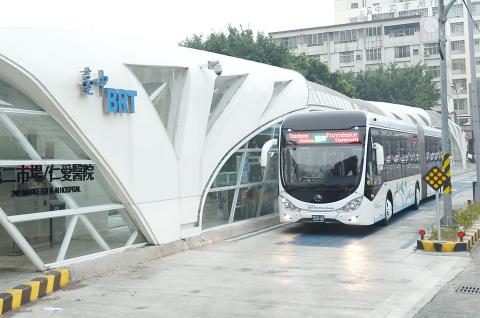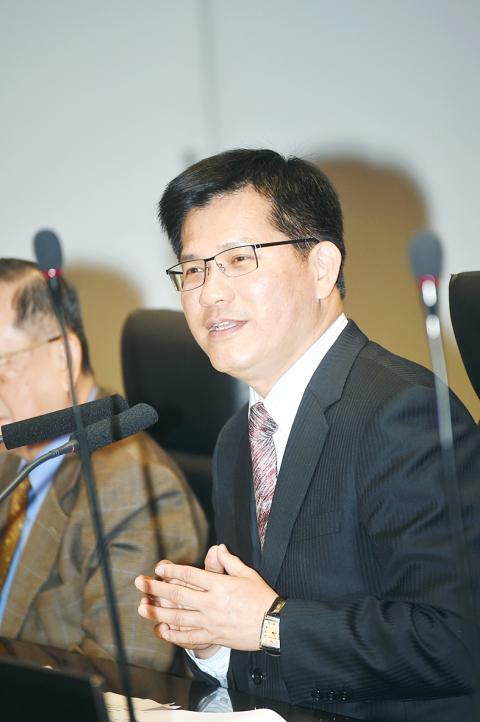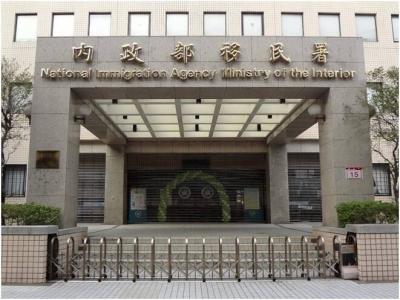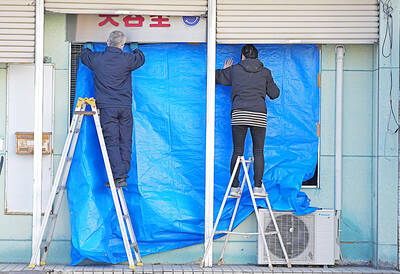The problem-plagued Bus Rapid Transit (BRT) system in Taichung, launched in July last year, is to be abolished after Taichung Mayor Lin Chia-lung (林佳龍) yesterday announced that the BRT lanes would be replaced with “optimized, dedicated bus lanes” starting on July 8.
Lin made the announcement at a city administration meeting.
He declined to describe the move as the “abortion” of the system, instead calling the city’s existing system “stillborn,” as BRT buses do not possess exclusive road rights or priority traffic signals, and the BRT traffic control center cannot communicate directly with the buses while they are on the road or at its stations.

Photo: Liao Yao-tung, Taipei Times
Under the new policy, existing BRT lanes would be exclusively for public buses that currently run on the dedicated bus-only lanes on Taiwan Boulevard (台灣大道) — the main road through the heart of the city — while BRT double-carriage buses would continue to run on the lanes after concerns over safety are addressed, the Taichung Transportation Bureau said.
About 30 percent of the public buses on Taiwan Boulevard would then be allowed to travel on the dedicated bus-only lanes, leaving slower lanes for motorists and motorcyclists, while at lease two bus lines on Taiwan Boulevard would continue to operate on the slow lanes for passengers using minor stations, the bureau said.
All the buses running on the “optimized dedicated bus lanes” would have a uniform look so that they can be easily identified, Lin said.

Photo: Liao Yao-tung, Taipei Times
“Their new livery will become Taichung’s new mobile landmark,” he added.
Lin said that decision would save the city government NT$28 billion (US$893.1 million) previously allocated for the completion of existing BRT lanes — and an additional five BRT lanes — adding that the money would be used to improve the city’s traffic management.
The city government contracted a team of experts to examine and review the BRT system after Lin took office in December last year.
The report was concluded on Saturday.
Lin said that the “optimized dedicated bus lanes” program integrates two proposals — “BRT Plus Bus” and “Pure Bus” — among the four suggested by the team.
The other two suggestions — “Pure BRT” and “BRT Plus Bus plus priority traffic signals” — were not accepted, after an evaluation found the difficulties in implementation were insuperable, Lin said.
The BRT system was the subject of heated debate among Taichung candidates in the nine-in-one elections in November last year.
When the system was launched by then-mayor Jason Hu (胡志強) of the Chinese Nationalist Party (KMT), Lin, a member of the Democratic Progressive Party, criticized Hu for rushing it through in a bid to garner votes in his re-election effort.
Lin said yesterday that the system was a failure in its establishment and operation.
Some motorists have complained about traffic congestion and what they describe as difficulty changing lanes, since BRT stations and lines were built on the islands between slow and express lanes.
A motorist surnamed Liu (劉) expressed disapproval of the new program, saying it would not make it any easier to change lanes and could increase the likelihood of an accident with more public buses running on the lanes.
Having the BRT lanes accommodate so many buses would only slow traffic, an unidentified KMT Taichung city councilor reportedly said, adding that Lin opposed the BRT just because it was a project of Hu’s.
The Ministry of Transportation and Communications later yesterday said that it would not ask the Taichung City Government to return the NT$163 million appropriated by the city to subsidize the construction of the BRT system.
The budget was given to the city to build the bus system and for the operator to purchase buses, ministry official Hu Ti-chi (胡迪琦) said, adding that, as the city plans to continue using the facilities despite the decision it made regarding the BRT lanes yesterday, the ministry would not ask the city to return the money.

A small number of Taiwanese this year lost their citizenship rights after traveling in China and obtaining a one-time Chinese passport to cross the border into Russia, a source said today. The people signed up through Chinese travel agencies for tours of neighboring Russia with companies claiming they could obtain Russian visas and fast-track border clearance, the source said on condition of anonymity. The travelers were actually issued one-time-use Chinese passports, they said. Taiwanese are prohibited from holding a Chinese passport or household registration. If found to have a Chinese ID, they may lose their resident status under Article 9-1

Taiwanese were praised for their composure after a video filmed by Taiwanese tourists capturing the moment a magnitude 7.5 earthquake struck Japan’s Aomori Prefecture went viral on social media. The video shows a hotel room shaking violently amid Monday’s quake, with objects falling to the ground. Two Taiwanese began filming with their mobile phones, while two others held the sides of a TV to prevent it from falling. When the shaking stopped, the pair calmly took down the TV and laid it flat on a tatami mat, the video shows. The video also captured the group talking about the safety of their companions bathing

PROBLEMATIC APP: Citing more than 1,000 fraud cases, the government is taking the app down for a year, but opposition voices are calling it censorship Chinese Nationalist Party (KMT) Chairwoman Cheng Li-wun (鄭麗文) yesterday decried a government plan to suspend access to Chinese social media platform Xiaohongshu (小紅書) for one year as censorship, while the Presidential Office backed the plan. The Ministry of the Interior on Thursday cited security risks and accusations that the Instagram-like app, known as Rednote in English, had figured in more than 1,700 fraud cases since last year. The company, which has about 3 million users in Taiwan, has not yet responded to requests for comment. “Many people online are already asking ‘How to climb over the firewall to access Xiaohongshu,’” Cheng posted on

A classified Pentagon-produced, multiyear assessment — the Overmatch brief — highlighted unreported Chinese capabilities to destroy US military assets and identified US supply chain choke points, painting a disturbing picture of waning US military might, a New York Times editorial published on Monday said. US Secretary of Defense Pete Hegseth’s comments in November last year that “we lose every time” in Pentagon-conducted war games pitting the US against China further highlighted the uncertainty about the US’ capability to intervene in the event of a Chinese invasion of Taiwan. “It shows the Pentagon’s overreliance on expensive, vulnerable weapons as adversaries field cheap, technologically